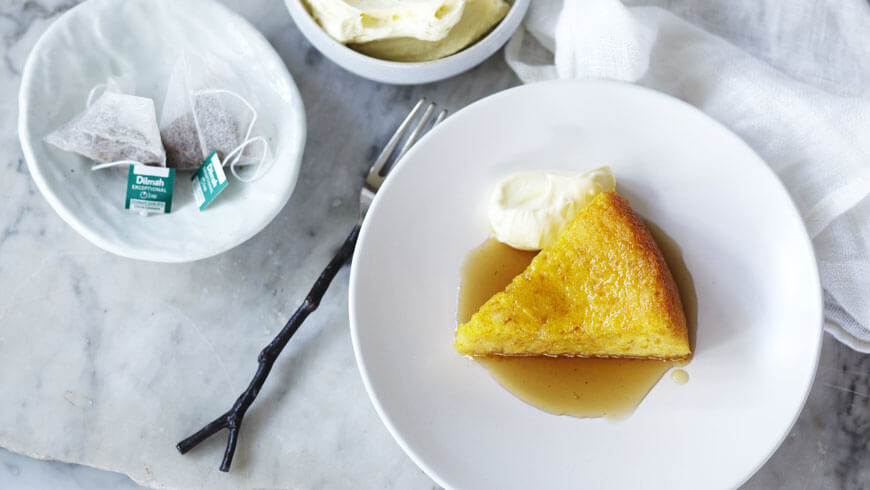Baking with Tea
Tea has the unique ability to stand on its own as a simple yet refreshing cup of tea, to be infused to enrich a food, beverage or dessert, or even be paired with cake or pastry to complete an evening tea time snack, due to the variety of different flavours of tea available.
Whether to cuddle up with a warm cup on a cosy day, or to refresh with an iced lemon tea on a sunny afternoon, or even to raise a cup to celebrate success, there is a different flavour and type of tea for every mood, moment and celebration.
The major types of tea produced in the world are black tea, green tea, oolong tea and white tea.
White tea is also known as ‘Silver Tips’ and is made from the handpicked buds of the Camellia Sinensis plant. It maintains a specific appearance with a silvery leaf, with velvety texture and producing a bright, golden liquor when brewed.
Green tea originated in China and is increasingly grown in India and Sri Lanka. It is unfermented, maintaining a generally mild and light and sometimes astringent characteristics. The leaf is picked, withered, heated and then rolled before drying and sifting.
Oolong teas vary from light “Springtime Oolong Teas” which has a gentle, floral and mild sweetness to the heavier dark Oolongs which are woody, sometimes earthy with heavy fruit and occasionally caramelized notes, Oolong teas are partly oxidized or fermented.
The traditional Black tea is the most consumed and common type of tea around the world. Black tea is picked, withered to reduce moisture and make the leaf pliable, then rolled, fermented and dried before sifting.
Without compromising the goodness of tea, black tea has been infused into a range of flavoured teas to enrich the tea drinking experience. Some of the flavour types include fruity, spicy, mint, tangy, citrus, sweet, creamy, floral and herbal as can be found in flavoured teas of lemon, cinnamon, apple, ginger, mint, strawberry, and blueberry and in a range of mix and match flavour types as well as elixir of Ceylon black tea.
The versatility and multidimensional qualities of the Camellia Sinensis plant has led chefs around the world to elegantly combine the flavours into surprising gastronomical experiences. They have extended tea infused foods and beverages to tea incorporate baking, making tea not just an accompaniment during evening snacks but a key ingredient of the snack itself.
Tea infused strawberry mille feuille is a classic example where the mille feuille is filled with silver jubilee Ceylon strawberry tea infused crème patisserie served with tea syrup and frozen strawberries, a tea inspired dish by New Zealand’s Museum Art Hotel
Similarly, the New York t-cheese cake developed by Shangri-La UAE is a new take on a classic favourite. The cookie based cheese cake is revived with the flavour of Dilmah’s spring time chocolate mint tea, to give a lovely twist to a tea time favourite.










